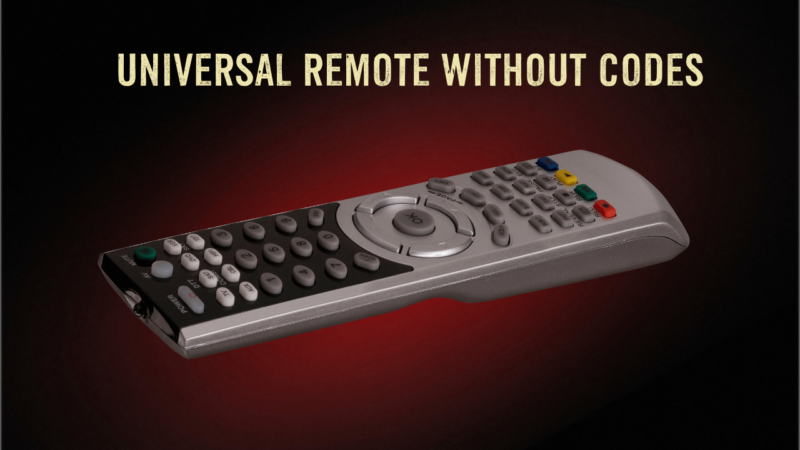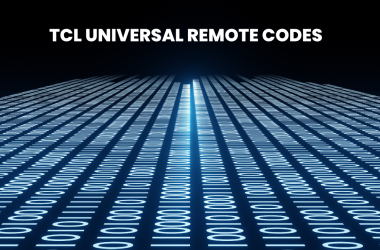In the age of smart devices and home automation, universal remotes remain an essential tool for managing your entertainment systems with ease. But what if you could use a universal remote without codes — no complex setup, no guessing codes, just simple plug-and-play functionality? This guide dives deep into how universal remotes work, how to use them without manual code entry, and the best models that simplify your home entertainment experience.
What Is a Universal Remote?
A universal remote is a device designed to control multiple electronic devices such as TVs, DVD players, soundbars, and streaming devices from different manufacturers using a single remote control. Instead of juggling multiple remotes, a universal remote consolidates commands, making it easier and more convenient to operate your home entertainment system.
Traditionally, universal remotes required manual entry of device codes specific to brands or models. These codes enable the remote to communicate effectively with each device.
Understanding Universal Remotes Without Codes
Universal remotes without codes are an evolution of traditional remotes, designed to eliminate the tedious process of finding and inputting codes. These remotes use automatic device detection or learning features to identify your devices and sync without manual intervention.
The code-free universal remote aims to make setup and everyday use intuitive and straightforward, especially beneficial for users who are not tech-savvy or don’t want to deal with instruction manuals.
Read Also: Fox Nation on Roku
How Do Universal Remotes Work Without Codes?
Code-free universal remotes rely on one or a combination of the following technologies:
- Auto Search Function: The remote cycles through all possible codes automatically until it finds the one that works with your device. This process often involves pressing specific buttons to initiate the search, after which the remote memorizes the correct code.
- Learning Function: These remotes “learn” commands from your original remotes by capturing the infrared (IR) signals and replicating them. This way, you don’t need to look up codes; instead, the remote clones the signals.
- Wi-Fi or Bluetooth Connectivity: Smart remotes may connect via apps or cloud databases, allowing automatic syncing without codes.
These technologies ensure seamless pairing and operation with a wide range of devices from various brands.
Types of Universal Remotes That Don’t Require Codes
Auto-Search Universal Remotes
These remotes feature a code search function where the user initiates a scan, and the remote tests different codes until it successfully controls the device.
Pros:
- No need to look up or enter codes manually
- Compatible with many devices
Cons:
- Can take several minutes
- Might need to repeat if devices change
Learning Universal Remotes
Learning remotes can capture IR signals from the original remotes. You simply point both remotes at each other and press buttons to transfer functions.
Pros:
- Works with virtually any device with an IR remote
- Personalized control setup
Cons:
- Requires access to original remotes
- Setup can be time-consuming for many devices
App-Based and Smart Universal Remotes
Modern remotes, such as Logitech Harmony or apps on smartphones, connect via Wi-Fi or Bluetooth and sync with your devices and streaming services automatically.
Pros:
- Highly versatile with smart home integration
- Updates automatically with new device databases
- Control via voice assistants
Cons:
- Usually more expensive
- Requires smartphone or hub setup
Advantages of Using a Universal Remote Without Codes
- Ease of Use: No more manual code searching or inputting complicated sequences.
- Time-Saving: Quickly pairs with devices in minutes.
- Reduced Frustration: Simplifies setup, especially for non-technical users.
- Multi-Device Control: Manage TV, sound systems, streaming boxes, and more with a single remote.
- Increased Compatibility: Often supports older and newer devices across brands.
Step-by-Step Guide: How to Set Up a Universal Remote Without Codes
Here’s a simple process using an auto-search universal remote:
- Power On the Device you want to control (TV, DVD, etc.).
- Press the Device Button on the remote (e.g., TV).
- Hold the Setup Button until the indicator light turns on.
- Press the Power Button repeatedly, or hold it, while the remote scans codes.
- When the Device Turns Off, immediately press the Setup button to lock in the code.
- Test Other Functions like volume, channel, or input buttons to ensure full control.
- Repeat for other devices using their respective device buttons.
For learning remotes:
- Align the Original and Universal Remotes IR windows about 1-2 inches apart.
- Press and Hold the Universal Remote Button where you want to store the command.
- Press the Corresponding Button on the Original Remote until the LED on the universal remote blinks.
- Repeat for all buttons you want to transfer.
Top Universal Remotes That Don’t Require Codes in 2025
| Remote Model | Features | Price Range | Best For |
|---|---|---|---|
| Logitech Harmony Elite | App control, voice assistant integration | $200-$250 | Smart home enthusiasts |
| GE 33709 Universal Remote | Auto code search, simple setup | $15-$25 | Budget users |
| RCA RCR503BZ Universal Remote | Auto code search, supports 3 devices | $10-$20 | Basic multi-device control |
| Inteset INT-422 Universal | Learning feature, supports streaming devices | $30-$40 | Media center users |
Read Also: Onn Universal Remote Codes
Troubleshooting Tips for Universal Remotes Without Codes
- Remote Not Controlling Device?
Make sure the device is powered on and within range. Repeat the code search or learning process. - Partial Control (Some Buttons Not Working)?
Use the learning function for specific buttons or try alternate codes. - Remote Not Responding?
Replace batteries and ensure there are no obstacles blocking the IR signal. - Multiple Devices Conflict?
Assign each device to a separate device button and ensure proper syncing.
Universal Remote Without Codes FAQs
Q: What is a universal remote without codes?
A: A universal remote without codes is a remote control that pairs with devices automatically using features like auto code search, learning, or smart app syncing — eliminating manual code entry.
Q: Can I use a universal remote without having the original remotes?
A: Yes, if the universal remote has a built-in device database or auto-search function. However, learning remotes require the original remote to copy signals.
Q: How do I reset a universal remote that won’t work?
A: Usually, you can reset by holding the Setup button or removing batteries for a few minutes. Refer to the remote’s manual for specific instructions.
Q: Are universal remotes without codes compatible with smart TVs?
A: Most modern universal remotes support smart TVs, especially those with app control or Bluetooth connectivity.
Q: Can I control multiple devices with one universal remote?
A: Yes, universal remotes are designed to control multiple devices, each assigned to different device modes (TV, DVD, AUX, etc.).
Q: How long does it take to set up a code-free universal remote?
A: Typically, 5-10 minutes for auto search remotes learning remotes may take longer depending on the number of buttons programmed.
Conclusion
Universal remotes without codes revolutionize how we control our home entertainment devices by simplifying setup and enhancing usability. Whether you opt for an auto-search remote, a learning remote, or a smart app-controlled device, these remotes eliminate the frustration of manual code entry and offer seamless multi-device control. With the right universal remote, you can reclaim convenience and efficiency in your living room.



![Universal Codes For Hisense TV Remote [Step-By-Step Guide] 7 Universal-Codes-For-Hisense-TV-Remote-[Step-By-Step-Guide]](https://smarttvmaster.com/wp-content/uploads/2024/04/Universal-Codes-For-Hisense-TV-Remote-Step-By-Step-Guide-1-380x250.png)

![[4,5,6 Digits] All Onn Universal Remote Codes Available Here 9 [4,-5,-6-Digits]-All-Onn-Universal-Remote-Codes-Available-Here](https://smarttvmaster.com/wp-content/uploads/2024/04/4-5-6-Digits-All-Onn-Universal-Remote-Codes-Available-Here-380x250.png)
